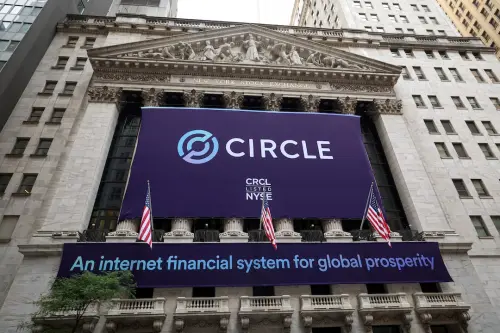Introduction
As stablecoins advance towards mainstream acceptance, portions of the U.S. Treasury market, particularly short-term securities, may face increased volatility due to their growing ties to the cryptocurrency sector.Context
Legislation is under consideration in Congress to establish a regulatory framework for stablecoins, which are digital currencies pegged to the U.S. dollar. This framework is anticipated to legitimize these cryptocurrencies, commonly utilized by traders to facilitate transfers between different tokens. Proponents of the bill believe that clear regulations will enhance stablecoin activity and support a burgeoning base of buyers for short-term U.S. government debt, also known as T-bills, typically viewed as cash-equivalent securities.However, concerns have been raised about the potential volatility that a larger presence of the relatively new and unpredictable crypto industry could introduce to the T-bill market. Analysts warn that a sudden loss of confidence or regulatory scrutiny could trigger extensive liquidations, consequently affecting Treasury prices and destabilizing fixed-income markets.
Developments
If the proposed stablecoin legislation is enacted, it would mandate that tokens are backed by liquid assets such as U.S. dollars and short-term Treasury bills. Additionally, issuers would be required to disclose their reserve compositions monthly. This means that as stablecoins become more prevalent, issuers will likely have to acquire more T-bills to support their assets.The Senate may pass the stablecoin bill as soon as next week, which could subsequently increase the amount of U.S. Treasuries held by stablecoin issuers like Tether. Currently, Tether and another issuer hold approximately $166 billion in U.S. Treasuries, according to a Bain & Company report. The stablecoin market, valued at around $247 billion as of now, could experience exponential growth up to $2 trillion by 2028 if legislation is successfully enacted.
Presently, there are nearly $29 trillion in Treasury securities outstanding, with $6 trillion designated as bills. Analysts at JP Morgan project that stablecoin issuers could emerge as the third-largest buyers of Treasury bills in the near future, raising concerns about tighter integration between the crypto sector and traditional finance.
The Treasury Borrowing Advisory Committee has indicated that a booming stablecoin market could diminish bank deposits, leading to reduced demand for U.S. Treasuries. Mark Hays, from Americans for Financial Reform, cautions that if stablecoin issuers need to dispose of their Treasuries rapidly, it could instigate credit crunches, which assumes stablecoins gain widespread usage following the passage of the bill.
Money market funds, which focus on short-term debt investments, closely monitor the developments in the stablecoin arena. Money market expert Pete Crane remarked that although the current size of the stablecoin market needs to substantially grow to impact financial stability concerns, the potential for rapid liquidations poses a risk of price declines in T-bills.
While issues within stablecoins have yet to generate systemic problems, these dynamics may change if federal regulations drive extensive adoption. Past turbulence in the crypto markets has not affected Treasury pricing significantly. In 2022, the then-U.S. Treasury Secretary acknowledged that stablecoins like Tether did not present systemic risks due to their limited scale. This year, Circle's USD Coin faced challenges after associating part of its reserves with a failed bank; however, no comments have been made by Circle or Tether on these matters.
